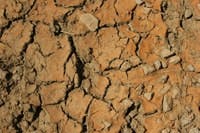One in three people is enduring one form or another of water scarcity, according to new findings released by the Comprehensive Assessment of Water Management in Agriculture at World Water Week in Stockholm. These alarming findings totally overrun predictions that this situation would come to pass in 2025.
“Worrisome predictions in 2000 had forecast that one third of the world population would be affected by water scarcity by 2025. Our findings from the just-concluded research show the situation to be even worse,” said Frank Rijsberman, director general of the International Water Management Institute (IWMI). “Already in 2005, more than a third of the world population is affected by water scarcity. We will have to change business as usual in order to deal with growing scarcity water crisis we see in some countries like India, China and the Colorado River basin of USA and Mexico.”
The Comprehensive Assessment, carried out by 700 experts from around the world over the last five years, indicates that one third of the world’s population is currently living in places where water is either overused, leading to falling groundwater levels and drying rivers, or can not be accessed due to the absence of the appropriate infrastructure.
The assessment, the first of its kind critically examining policies and practices of water use and development in the agricultural sector over the last 50 years, was co-sponsored by the CGIAR, FAO, the Ramsar Convention on Wetlands and the Convention on Biological Diversity in a bid to find solutions to the challenge of balancing the water-food-environment needs. It was spearheaded by IWMI, one of 15 agricultural research centers supported by the CGIAR that are striving to increase food production, increase rural incomes and safeguard the environment.
Rijsberman explained, “Our results show that one quarter of the world’s population live in river basins where water is physically scarce; water is over-used and people are affected by environmental consequences from falling groundwater levels to dying rivers that no longer reach the sea. Another one billion people live in river basins where water is economically scarce; water is available in rivers and aquifers, but the infrastructure is lacking to make this water available to people.”
Access to reliable, safe and affordable water is understood and accepted as a key step out of poverty for the world’s 800 million rural poor. Many more people dependent on rivers, lakes and other wetlands risk falling into poverty because of declining groundwater supplies, loss of water rights and access, pollution, flooding and drought.
David Molden, who led the Comprehensive Assessment, said, “To feed the growing population and reduce malnourishment, the world has three choices: expand irrigation by diverting more water to agriculture and building more dams, at a major cost to the environment; expand the area under rain-fed agriculture at the expense of natural areas through massive deforestation and other habitat destruction; or, do more with the water we already use. We must grow more crop per drop, more meat and milk per drop, and more fish per drop.”
Africa’s savannahs, which have most of the world’s poorest people who typically rely on rain-fed agriculture, are singled out by the assessment as holding the greatest potential for increasing water productivity, increasing agricultural yields per unit water used.
“The savannahs are fragile and the rainfall is variable; making them productive systems for farmers is very difficult,” Rijsberman said. “But this year, the World Food Prize goes to three scientists who have done exactly that for the Brazilian savannahs, the cerrados. The Brazilians used improved varieties of African grasses to conquer their savannahs. They proved that it can be done. The same miracle needs to be repeated in Africa.”
Already the consequences of water scarcity are evident in a number of countries. Egypt imports more than half of its food because it does not have enough water to grow it domestically. Australia is faced with major water scarcity in the Murray-Darling Basin as a result of diverting large quantities of water for use in agriculture. The Aral Sea disaster is another example where massive diversions of water to agriculture have caused widespread water scarcity, and one of the world’s worst environmental disasters.
Despite the impending threat, the assessment identifies numerous bright spots—innovative approaches that hold potential for the future. These include very low cost technologies that facilitate access to, and use of water by, the rural poor. With health issues addressed, for example, people can effectively use urban wastewaters as a productive resource. Irrigation could also be reformed and transformed to reduce water wastage and increase productivity.
Source: Consultative Group on International Agriculture Research


